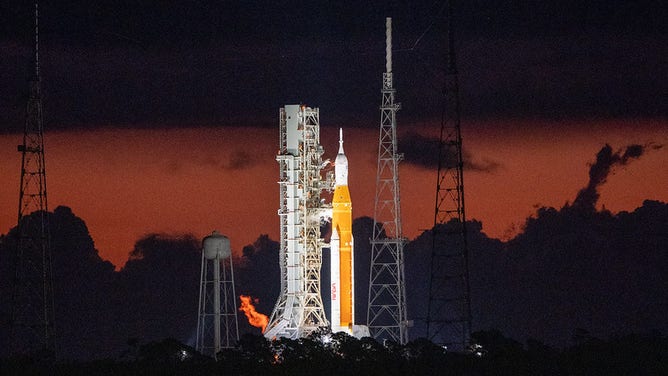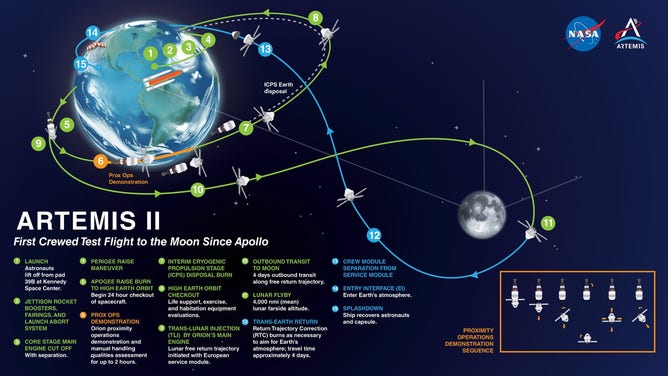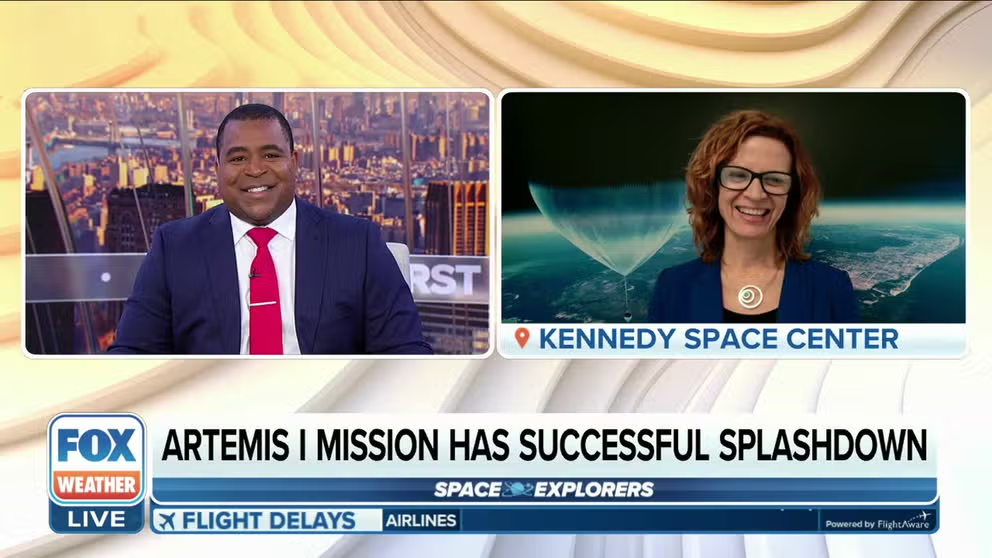NASA: Mega moon rocket exceeded expectations; preparations underway for first crewed Artemis mission
Artemis I launched from Florida’s Space Coast on November 16 and ended with the successful splash down off Mexico around 25 days later.
What successful Artemis I mission splashdown means for future of space exploration
Jane Pointer, Space Perspective’s Founder and Co-CEO, talks everything from Apollo 17 50th anniversary to 2023 trends and predictions for space.
NASA engineers believe the agency’s most powerful rocket is ready to support crewed flight after undoing months of review and getting ever closer to a final report, which would pave the way for future space endeavors.
The agency posted an update Friday on the review of the Space Launch System rocket and reported all preliminary post-flight data showed the system’s first launch performed exceptionally well and that its design is ready to support a crewed mission.
The SLS rocket and Orion spacecraft launched from the Kennedy Space Center on November 16, 2022, after a series of delays and technicalities sidelined the Artemis I mission for months.
The agency said the core stage of the rocket had more than 1,000 sensors that recorded extreme forces and temperatures.
"The data we got back from Artemis I is critical in building confidence in this rocket to send humanity back to the Moon," said John Blevins, SLS chief engineer. "The SLS team will use what we learn from this flight test to improve future flights of the rocket, and we are already taking what we’ve learned about operations and assembly and applying it to streamline future missions."

NASA’s Space Launch System (SLS) rocket with the Orion spacecraft aboard is seen atop the mobile launcher at Launch Pad 39B, Monday, Aug. 29, 2022, as the Artemis I launch teams load more than 700,000 gallons of cryogenic propellants including liquid hydrogen and liquid oxygen as the launch countdown progresses at NASA’s Kennedy Space Center in Florida. Photo Credit: (NASA/Keegan Barber)
(NASA)
A LOOK AHEAD AT 2023 SPACE EXPLORATION MILESTONES
From initial analysis, NASA said key engine pressures and temperatures were within two percent of predicted values and entrance into orbit was off by 2.9 miles – all well within its acceptable parameters.
In addition to aboard sensors, an estimated 31 terabytes of imagery was taken from an array of cameras, tasked with finding the smallest anomalies.
"NASA’s Space Launch System rocket has laid the foundation for the Artemis Generation and the future of spaceflight in deep space," John Honeycutt, SLS program manager, said in a statement. "The correlation between actual flight performance and predicted performance for Artemis I was excellent. There is engineering and an art to successfully building and launching a rocket, and the analysis on the SLS rocket’s inaugural flight puts NASA and its partners in a good position to power missions for Artemis II and beyond."
NASA ORDERS $2 BILLION WORTH OF SPACECRAFT FOR FUTURE ARTEMIS MISSIONS
History made: A look back at NASA's Artemis 1 journey to launch
Early Wednesday morning, the Artemis I moon rocket successfully launched from the Kennedy Space Center.
An Orion spacecraft devoted to the Artemis II mission is being readied at the Kennedy Space Center for a potential launch in late 2024.
Engineers were photographed in mid-January installing an orbital maneuvering system engine nozzle and heat shield for the module.
NASA has not announced the crew who will launch from Florida’s Space Coast and travel around the moon before splashing down back on Earth.
If the second mission is successful, NASA leadership said a crewed flight to the moon as part of Artemis III could happen in 2025 and be the first lunar landing in more than 60 years.

Artemis II mission plan
(NASA)

